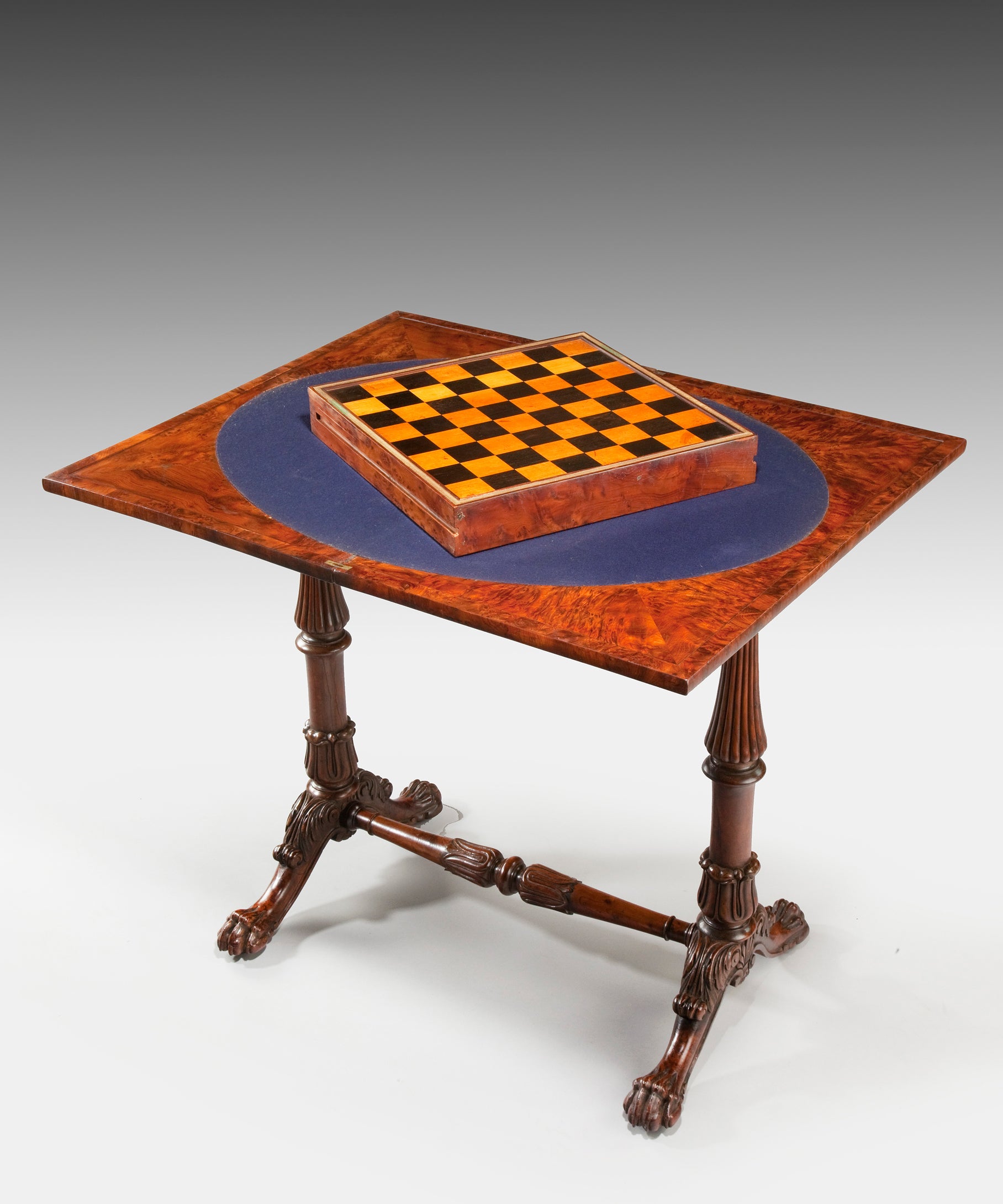Antique Card and Games Tables
A game of cards or a boardgame is still the perfect way to spend some quality time with your family- especially on a rainy day! In the eighteenth and nineteenth centuries, card and games tables were one of the most fashionable pieces of furniture in the home. Often the focus of a social event, they were brought out into the middle of a room and when they were no longer needed could be discreetly placed against the wall as an occasional table. Tables for cards and games such as chess and backgammon grew in popularity from the late sixteenth century.
Purpose-made antique card tables as we know them today were only introduced at the end of the seventeenth century and coincided with a general rise in use-specific furniture. These first card tables were normally rectangular in form with 6 pillar legs, so that the additional two could swing out to support the folding flap; they often had cylindrical corners for candles. As the Georgian era progressed there was a greater variety in the form of the card table with circular, oval, demi-lune, serpentine and D-shaped tops. These half-round tops were perfect for fashionable card games such as a three-handed game known as Ombre and a four-handed game called Quadrille, which was particularly favoured by Queen Caroline.
Here at Reindeer we have some lovely card and games tables.
A pair of Sheraton card tables, 1795

By the end of the eighteenth century card tables began to appear in pairs and sometimes in fours. This elegant pair of antique Sheraton period card tables are veneered in bookmatched satinwood, crossbanded in rosewood and tulipwood and strung in box and ebony. They have the traditional fold-over top which rests on the two back legs when opened up; this reveals a baize lined interior above a frieze inlaid with geometric panels of rosewood.
A pair of Regency period rosewood card tables, c.1820

Antique card and game tables evolved once again during the exuberant and experimental Regency period. Thanks to a greater understanding of mechanical furniture these tables are interesting as they have moved on from the average four-legged fold-over card table.

Here the antique table rests on a gilded ball stem terminating in four swept legs inlaid with amboyna and original lion paw casters. The top ingeniously swivels through 90 degrees and then opens out supported by the central stem. These tables form part of a suite of Regency furniutre with an acommpanying sofa table.
A nineteenth century yew games table, 1840

This table emphasises the level of attention given to the craftsmanship of an antique games table during the middle of the nineteenth century. It has an elegant rotating top which reveals a blue baize lined oval surface set within a burr yew surround, resting on reeded and lotus leaf carved end supports that are united by a crisply carved lotus leaf stretcher with swept legs terminating in lion paw feet.

The designer has cleverly added a pull-out frieze drawer which has playing surfaces for backgammon and chess- this is a beautiful example of a multi-purpose games table. It is veneered throughout in highly figured burr yew which has even been used for the drawer linings indicating that no expense or attention to detail was spared; it is possible that this piece was specially commissioned.
As we have seen, antique card and games tables can come in various shapes and styles, they are functional and multi-purpose pieces of furntiure that can easily act as occasional or side tables when not in use. Whether you are playing bridge, chess or even Monopoly an antique card or games table will add a great deal of charm to your interior!

